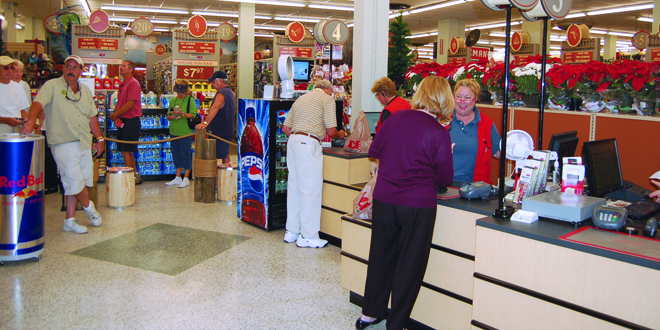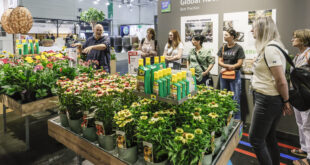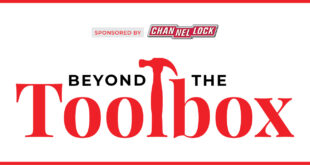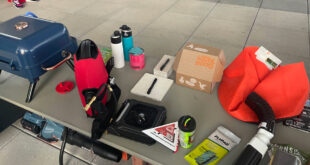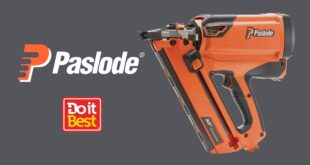To download a PDF of this story, click here. To download the Impulse Selling Guide, visit hardwareretailing.com/sell-impulse.
What Sells & How Do You Sell It?
Whether it’s the pharmacy or the office supply store down the road, retailers use strategic merchandising when stocking their shelves to encourage impulse purchases—and it’s working!
Even consumers who carefully budget or try to adhere to a list often add extra items to their shopping carts after browsing the store. According to a study by the Integer Group, one of the world’s largest promotional, retail and shopper marketing agencies, nine out of 10 shoppers still buy items not on their lists.
So what makes a consumer decide to pick up a pack of gum or a tube of lip balm?
It seems as though people don’t know what they want until they see it, according to an article by Specialty Retail. The article quotes Paco Underhill, author of the book “Why We Buy: The Science of Shopping,” who says, “Two-thirds of the entire economy is impulse buying.”
The single-line checkout queue, dollar sections near the front of the store, clip strips and theme-driven endcaps are all examples of merchandising tactics that encourage customers to add to their baskets, and retailers like you are using these techniques to find success in impulse every day.
To get a better understanding of how independent home improvement retailers are adding to their operations’ bottom lines through impulse sales, Hardware Retailing spoke with five retailers who have made impulse items a part of the shopping experience in their stores.
These retailers share the impulse items their customers can’t resist and the strategic merchandising techniques that add to the items’ allure, which you can see through the photographs in the article.
For a quick summary on ways to sell impulse items, visit hardwareretailing.com/sell-impulse.
What Sells
The impulse category includes a wide range of products. From standards like chips, candy and soft drinks to home basics like paper towels and batteries, as well as seasonal items like rakes and shovels, impulse spills into many categories.
I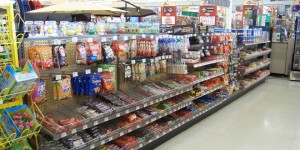 mpulse products are part of a larger consumer goods category called convenience goods, which are, by definition, purchased with minimum effort and the customer does no research prior to shopping. It is subdivided into staple, impulse and emergency goods. While one of these subcategories is specifically identified as impulse, all three of these can act as impulse buys in your store.
mpulse products are part of a larger consumer goods category called convenience goods, which are, by definition, purchased with minimum effort and the customer does no research prior to shopping. It is subdivided into staple, impulse and emergency goods. While one of these subcategories is specifically identified as impulse, all three of these can act as impulse buys in your store.
By definition, a staple product is an item that is low-priced and purchased frequently. Impulse items are those the consumer has no plan on buying during the store visit, and emergency are products that are purchased in urgent need, such as batteries or an umbrella and poncho during a rain storm.
Food and Drinks
One way to integrate impulse items into your store is by stocking up on drinks and single-serving packaged food that a DIYer or contractor may want to grab for a quick snack, or even products they simply want to try.
At Joe’s Hardware in Fallbrook, California, food and drink is and will always remain popular among customers.
“Chips, sodas, waters, energy drinks and candy bars are some obvious impulse items that always do well,” says owner Joe DeRoest. “Everybody gets thirsty and hungry, so these impulse items will always be a staple.”
While consumables like big-name brands of chips, candy and soda are a given, this category can even expand into local offerings.
At Alspaugh’s Ace Hardware in The Woodlands, Texas, locally made pickles are one example of an impulse food that has grown in popularity, according to store manager Troy Blackmon.
“We keep local food products in impulse areas, such as ‘You’re So Country Pickles,’ which are made nearby,” Blackmon says.
“Keeping it close to home with these products allows it to become a personal mission of our customers to help these local companies remain and flourish,” he says.
A few other popular impulse treats retailers are adding to their shelves include old-fashioned soda and candy, locally sourced jerky and more. All of these items can please a hungry shopper and add to your bottom line, one item at a time.
A hot seller in candy at Longmont Ace Hardware are the individually wrapped Annie B’s caramels, says Kirsten Pellicer, vice president and manager of the Longmont, Colorado, store.
“Annie B’s caramels sit by the register,” Pellicer says. “When customers check out, they may grab one or more. By unit, there are a lot of pieces, so it can add up.”
Seasonal and Holiday Items
Thinking seasonally is another way to increase impulse traffic and boost sales. Arrange rakes and bags for leaves in the fall; shovels, salt and winter-proofing products for the colder months and even holiday-themed purchases throughout the year.
To complement the grilling selection at Alspaugh’s Ace Hardware, flavored wood chips are a popular impulse item customers can add on to lighter purchases.
For Matthew Henery, owner of Henery Do it Best Hardware in Port Townsend, Washington, and three other locations in the state, some of his most popular impulse items fall into the seasonal category, with bird food, garden tools and other seasonal items luring customers to purchase based on their current needs. And with Christmas decorations in the winter, small housewares items like candles for Mother’s Day and patriotic items for Memorial Day and Independence Day, you can get customers excited for each holiday, enticing them to add products to their shopping carts.
Toys and Children’s Items
Some of the most popular impulse sellers right now at Oakley Farm and Home Center in Oakley, Kansas, are toys and products for kids, says assistant manager Jennifer Crotts. Toys are popular impulse items customers—or their children—add to their purchases. With small, low-cost items like dolls, miniature cars, bouncy balls and more, these items keep the shopping experience pleasant for the whole family and add to impulse sales.
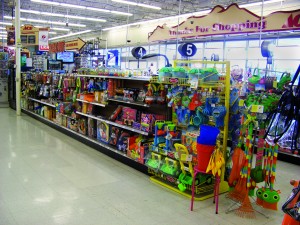 In the fall, the store sold wooden school buses for kids with the local school name printed on it. Displaying the chairs near the register intrigued customers and led them to purchase the chairs because of the local theme, Crotts says.
In the fall, the store sold wooden school buses for kids with the local school name printed on it. Displaying the chairs near the register intrigued customers and led them to purchase the chairs because of the local theme, Crotts says.
“One of our most popular items right now are these light-up bouncy balls,” she says. “Toys are always popular, because parents and grandparents might decide to get something for a child as a reward for good behavior.”
Look for Unique Items
To round out the impulse category, the retailers we spoke with all agreed it’s important to be open-minded to different kinds of unique, unconventional items.
“We’re always looking for the next funky thing,” Pellicer says. “I think the biggest thing is not to be afraid to think outside the box. I tend to think the modern hardware store is more of a general store. The boundaries are pretty wide.”
A few examples of these unique impulse items include products like locally made lotions and lip balms, “As Seen on TV” items and funny gag gifts. “We’re really looking for niche items or, a lot of times, unusual items,” says DeRoest. “Items that do well are things like the Redneck Plunger. It looks like a shotgun but has a plunger on the end and sounds like a gun when you use it. It’s amazing how these goofy $20 or $25 items catch customers’ eyes.”
How You Sell It
Merchandising Displays
When you browse retail locations outside the home improvement industry, you can easily see how these retailers are taking the category to the next level. From long and winding checkout aisles lined with products at stores like Michaels, Home Goods and Best Buy to the dollar section at Target, consumers have more opportunities to shop impulsively than ever before.
 So how can you take the examples you see in other stores and add them to your operation? Each of the retailers we spoke with found ways to make merchandising for impulse products creative and engaging for their consumers. They have found success by placing a heavy emphasis on the checkout area, creating unique endcaps, utilizing signage and displaying clip strips in departments throughout the store.
So how can you take the examples you see in other stores and add them to your operation? Each of the retailers we spoke with found ways to make merchandising for impulse products creative and engaging for their consumers. They have found success by placing a heavy emphasis on the checkout area, creating unique endcaps, utilizing signage and displaying clip strips in departments throughout the store.
Browsing the Checkout Line
After attending a distributor market, DeRoest got the idea to create a single-line queue as away to boost add-on sales at checkout. After remodeling about a year and a half ago, he and his staff have found what does and doesn’t work with this popular merchandising tactic.
“Last year, we watched the average ticket go up by more than $1,” DeRoest says. “With over 800 customers a day, that adds up.”
For retailers considering a single-line queue, DeRoest says it’s important to keep it basic and be prepared to change things for the customer.
“Keep it simple as far as the traffic flow,” DeRoest says. “We had fun with it, but there was definitely a learning curve. It’s more important to make the line shoppable so customers have space to browse. If the line is too narrow, it doesn’t work.”
Longmont Ace Hardware rebranded and reopened in 2012 and followed the direction of retailers outside the industry like Best Buy and office supply retailers by deciding a single-line queue was the best way to organize the checkout area.
“Impulse means there’s a lot more to shop,” Pellicer says. “We have 32 feet to display impulse items in our checkout line.”
Endcaps and Displays that Stand Out
An eye-catching endcap featuring product videos or items necessary to complete a project increases impulse purchasing.
Take Oakley Farm and Home Center for example. Thanks to Crotts’ time spent browsing Pinterest, she started to generate ideas for how to make endcaps more exciting and promote impulse buys.
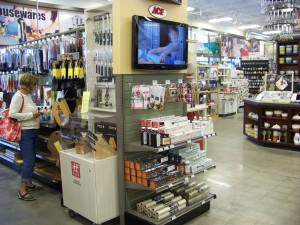 “I’ve done a couple of different endcaps based on ideas I got from Pinterest, and it’s gone pretty well,” Crotts says. “Another project I promoted was Easter grass. I had extra herb containers that weren’t moving, so I decided to sell the project, adding potting soil and grass seed available in bulk and container bags. It was something fun for kids to do.”
“I’ve done a couple of different endcaps based on ideas I got from Pinterest, and it’s gone pretty well,” Crotts says. “Another project I promoted was Easter grass. I had extra herb containers that weren’t moving, so I decided to sell the project, adding potting soil and grass seed available in bulk and container bags. It was something fun for kids to do.”
Crotts has done a few other creative endcaps with ideas she found on Pinterest. She says she gathers all the items for the project she wants to sell and includes a finished example to draw customers in. With the Easter grass endcap, she says parents and grandparents were drawn to pick up the items, even thought they weren’t on their original shopping lists.
Finding fun ideas and making signage to accompany them has been a great way to boost these endcap projects and increase impulse sales, Crott says.
Signage near products is another tactic to use when merchandising for impulse, and interactive signage is even better. Longmont Ace Hardware has several POP TVs throughout the store, and these are another way to draw attention to impulse items, Pellicer says.
“We have video endcaps in the store, and some perform better than others,” she says. “It all depends on the content you have available for them.”
In addition to the POP TVs, Pellicer says it’s important to consider all forms of signage and price markers to grab customers’ attention.
“Even small changes like a sign on an item or a color-coded display instantly draws attention, and you can do it in any area of the store,” she says.
For more insight on how your impulse sales can increase, analyze the sales of each endcap to measure their success. At Henery Do it Best Hardware, Henery has created a system that helps him change and improve impulse on a monthly basis.
“I have created what I call my endcap map, which I draw out monthly,” Henery says. “This helps me to see how the endcaps have done. I analyze how well an endcap has performed, looking at how many dollars per square were made and ultimately determining if we want to continue to do a specific endcap in the future.”
Through his endcap mapping, Henery says he has found what items do well on specific endcaps throughout the store.
“Our best endcaps are typically the ones a customer will see when they first walk through the store and when they walk out of the store,” Henery says.
Impulse Throughout the Store
Longmont Ace Hardware has expanded its impulse merchandising to many areas throughout the store by analyzing customer foot traffic.
“We started experimenting with other places people stand in the store, like at our service desk,” Pellicer says. “We also have a post office in the store and have taken impulse items there as well as the power aisle, which has a lot of traffic.”
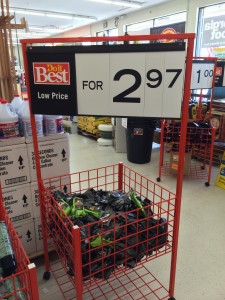 While Oakley Farm and Home Center utilizes endcaps to sell impulse projects in correlating areas, they also have other locations in the store that serve as impulse hubs.
While Oakley Farm and Home Center utilizes endcaps to sell impulse projects in correlating areas, they also have other locations in the store that serve as impulse hubs.
“We have a big black rack located at the front of the store,” Crotts says. “We like to switch it out seasonally, as customers will pass it walking in or walking to the register.”
At Alspaugh Ace, merchandising means trying to create an opportunity for customers to spend that extra dollar, no matter where they are in the store.
“Impulse items in our store are located at the registers and throughout the store via clip strips, like candy in the plumbing and electrical departments for those customers in the middle of their work day,” Blackmon says. “The more points of contact the impulse items have with the customer, the greater the turns will be in the impulse category.”
While Henery Do it Best Hardware has created an emphasis on analyzing endcap success, Henery says other merchandising strategies are helpful throughout his stores.
“We cross-merchandise with clip strips all over the store,” Henery says. “A few examples right now are electric cords in the electric power tools or garden tools aisles or caulk from the paint department on clip strips near the sinks.”
His store also uses dump bins to draw customers’ attention to items they may need, like wasp and hornet sprays or batteries.
Henery says merchandising items with endcaps and clip strips is a great way to add on sales.
“I like to think we’re able to sell air by using clip strips and endcaps in our store,” Henery says. “You’re adding items without adding floor space, gaining sales you wouldn’t have otherwise.”
In addition to the single-queue checkout, staff at Joe’s Hardware merchandises impulse items in the store’s power aisle.
“Through the center of the store, we have dump bin displays, and we have endcaps with some clip strips,” DeRoest says. “I think the impulsive item, in my mind, is an add-on item that you wouldn’t have sold otherwise. As a business owner, you have to look at ways to sell that extra item. If you can get one extra item in your customers’ hands, that can be the difference between being in the red or the black.”
Three Companies That Merchandise Impulse Effectively
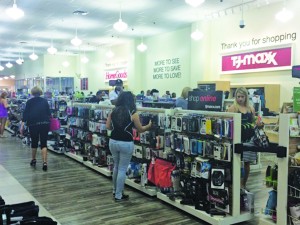 Home Goods
Home Goods
HomeGoods is a home decor retailer that offers name-brand housewares items at a discounted price. This retailer uses many techniques like signage and store displays to promote impulse.
One way HomeGoods increases its impulse sales among customers is through a single-line queue that displays a multitude of items in a long, winding line for customers to browse while they wait to check out. This format has become popular at stores like Best Buy and Michaels, among others.
Popular items found in this line include candles, fake plants, snacks, drinks, framed photographs, children’s toys, cell phone accessories and more. Think of how a single-line queue may work in your store. Impulse can cover anything from home basics to food to fun gag gifts.
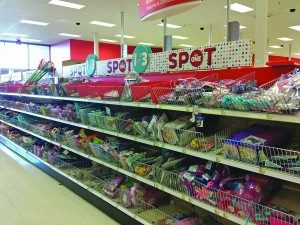 Target
Target
If you are looking for more ways to merchandise impulse items in your store, look at retailers outside of the home improvement industry. Target, one of the largest discount retailers in the U.S. encourages impulse immediately.
As soon as customers walk into a Target store, they are greeted by the dollar section, known as the Target Dollar Spot.
The Target Dollar Spot mimics popular dollar stores by creating a space with items that are low-priced and tempting to purchase on an impulse. With stationery, cleaning supplies, seasonal goods, toys and more, it is an area that draws customers in through its signage and low prices alone.
Your store can create a similar section by featuring lower-priced items and using signage to attract customers.
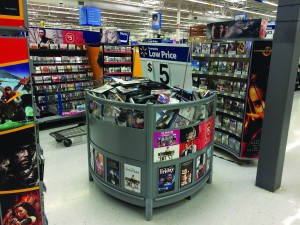 Wal-Mart
Wal-Mart
Wal-Mart is one of the top discount retail chains in the U.S. It sells a wide range of products, including housewares, electronics, toiletries, lawn and garden and even groceries. Customers are drawn to its low prices by signage and merchandising techniques.
Wal-Mart retail locations use many different tactics to entice customers to shop. From seasonal project endcaps to stack-out displays featuring products like back-to-school necessities, the retailer has no trouble gaining impulse sales.
Locating dump bins throughout Wal-Mart floor plans is another way the retailer pushes impulse. One example is the $5 movie dump bin in the electronics department.
Your store can use dump bins to feature home basics or items to complete projects and encourage impulse shopping.
 Hardware Retailing The Industry's Source for Insights and Information
Hardware Retailing The Industry's Source for Insights and Information



